Many floral cultures that are grown today at our country areas were brought from other countries. This also applies to the flower, referred to as Rudbeckia (Lat. Rudbeckia), which is also called the "Golden Ball", "Solar Hat", "Chernozhaya Susanna". North America is considered to be the birthplace of this beautiful plant. Rudbeckia migrants were brought to the territory of Europe and Africa. Now the flowers "Golden Balls" are successfully grown in our Russian regions. Flowers love this culture for its beautiful appearance, represented by large bright yellow petals, which elegantly framing the dark core of the inflorescences. No wonder the golden balls received the appropriate name. The plant attracts butterflies in the summer, and thus even more decorate flower flower beds. In addition, Golden Balls Rudbeckia are often grown in floral greenhouses and are used to create beautiful gift bouquets. More information about the characteristics of this culture and how the landing and care for the "golden balls" is carried out in our latitudes - we will tell you in this article.
Description of golden balls
Golden ball - a long-term flower, which refers to the Astrov family. There are also annual plants. The scientific name culture received in honor of the Family of Botany from Sweden - Rudbecks.
The main characteristics of Rudbecia golden balls:
- The flower has pretty high stems whose height ranges from 50 cm to 2.5 m.
- On the stem there is a small amount of leaflets, the diameter of which ranges from 6 to 22 cm. The shape of the leaves depends on the variety of culture and can be oval, oblong, ovage.
- A plant is multiplied both with the help of seeds and ever. You can buy seeds of colors of golden balls in specialized flower stores or collect them on their own in the country area from those plants that have already been blowing away.
- Rudbecia's inflorescences are presented in the form of a rather large basket, the dimensions of which range from 10 to 17 cm.
- Flowers culture with bright yellow flowers. The core of the flower has a darker color and can be brown, purple or black.
- Culture pleases flowering after its landing for 3 years.
Color breeding Golden balls
Color breeding techniques Golden balls depend on the variety of plants. So, there are several ways:
- Seed reproduction.
- Decision root.
- Transplanting.
- Samos.
Most often, gardeners choose a seed method of breeding culture. It is held according to the following rules:
- Seed seeds in the prepared ground follows in the middle of summer. For this, the seating material is pre-prepared - conduct a stratification procedure.
- Each seaw is deepened into the soil for no more than 2-3 cm. Then, top with a layer of land. The distance between each landed seed should be about 10-20 cm. It depends on what kind of culture is planted. For example, the tall species of Rudbecia will require more space for the growth of rhizomes.
- Soil in the greenhouse after disembarking seeds should be poured. However, remember that the plant does not like moisture stagnation, so control the amount of water during watering.
- After the first sprouts were crossed, the culture can be resettled into open ground.
Very often when favorable conditions are created for the growth of culture, it can multiply on the garden of the self-sowing. Therefore, if you noticed the first crumpler sprouts on the flowerbed, simply switch to them either transfer the seedlings to another place.
As for the repeated method of reproduction, it is longer than landing with seeds, but guarantees a more successful result. You can buy the finished seedlings of golden balls in a specialized store for dachnings. However, if you decide to grow it yourself, taking advantage of a decision of reproduction, then act in the next sequence:
- The procedure begins at the beginning of the spring period. To do this, we should prepare landing containers with soil.
- Seeds of culture are placed in cooked containers with soil. Then they are sprinkled and sprayed with water from the sprayer.
- Store planting containers under the film. In the room it is necessary to maintain a favorable climate - the temperature should not fall below 20 degrees.
- The first sprouts will be processed after 14-20 days. During this time, do not forget to systematically moisten the soil in the container. In addition, periodically boxes with planting material should be tired.
- When the first sprouts were crushed, they need to be seeded so that they were at a distance of 10 cm from each other. Thus, the rhizome of the growing seedlings will be formed strong and healthy.
- After the seedlings were broken, it should be gradually hardening. For this, containers with seedlings are necessary to endure a balcony for several minutes. Daily increase the time for hardening the culture, gradually bringing it to 2-3 hours a day.
Golden Balloons: Landing in Soil
Growing gold balls is an easy task. The main thing is to adhere to some simple rules. So, before landing, it should be properly picking up a plot for Rudbecki. Soil there should be fertile, well-draned. The sun rays should easily enter the plot, while it should be protected from wind and drafts. It is worth saying that the flowers golden balls grow well not only on solar pools, but also in a half.
The landing in the soil should be carried out at the end of the spring period, when the soil warms well. The procedure for the work is as follows:
- Pre-soil fertilize the ground. For this, the compost is perfect.
- Next, the landing wells should be made to disembark seedlings. Pots are made at a distance of 35-40 cm from each other.
- The seedling deepens at about 7-8 cm. Replant seedlings from the container should be very careful, so as not to damage the rhizome.
- After planting the soil on the site it is necessary to cover the mulch layer. If freezes are expected at night, part of the flower beds are recommended, on which plants are planted, to cover the agrosphan.
Golden Balls: Care
Flowers Golden ball - a riddle of a riddle, brought to us from the American continent, is not bad and in the conditions of our climate. To do this, it is enough to adhere to simple culture rules:
- The plant needs regular watering. Watering flowers should be under the root, preferably 2 times a day - in the morning and in the evening. If in the summer period is hot and dry weather, then the volume of watering should be increased.
- The soil on the plot on which these beautiful sunflowers are planted should be regularly loose.
- Delete weeds in a timely manner.
- If high-temperature culture varieties are planted, then make sure that they have supports to which in the future you need to suspend the colors.
- Once every 3 months in the soil on the plot should be made of feeding. For this, a mixture of nitroposki, potassium sulfate and agricham-7 is suitable.
- Delete faded and sick leaves in a timely manner.
- Every 4-5 years, the flower should be replant, otherwise it stops flowering and begins to give abundant foliage. For this, the bush is divided into grooves, which are then planted on other flower beds. The plant transplantation should be carried out in March or July, when Rudbeckia is wondering.
Golden Balls: Diseases and Pest
The following diseases and pests may interfere with growth and flowering of culture:
- Puffy dew. It is characterized by the presence of white spots on the leaves and the plant stem. To combat this ailment, a mixture of colloid sulfur or a weak solution of copper sulphate is successfully applied.
- Sheet nematode. It is characterized by the presence of brown spots, which are located on the leaves and the stalk of the plant. In the future, the affected leaves die and fall. You can cope with the disease with the help of drugs such as Basamid, Nemagon and Nemafos. In addition, a weak solution of manganese can be used to treat the affected parts of the culture.
- Larvae and caterpillars. You can cope with these parasites using garden preparation or manganese solution.
Golden Balls: Grade
Annual plants:
- Rudbeckia Hirta (Rudbeckia Hirta). The height of the culture of this variety is 1-1.2 m. Leafs have an oval or ovoid shape. Sizes of inflorescences range from 8 to 12 cm. Flowers culture with yellow flowers with a purple core.
- Rudbeckia Bicolor (Rudbeckia Bicolor). The height of the culture of this variety varies from 30 to 75 cm. Flowers with small flowers, the diameter of which does not exceed 7-9 cm. Double Rudbecki flowers are painted not only in yellow, but also in orange. Flowering culture passes from the beginning of summer and ends only at the beginning of autumn.
- Rudbeckia Clamping (Rudbeckia amplexicaulis). Height reaches 90 cm. Leafs have an oval shape.
- Rudbeckia Triloba (Rudbeckia Triloba). Abdominal culture variety. Refers to high-quality species, as the height of the stem can reach 1.5 m. Flowers plant with yellow flowers with a bright brown core.
Perennials include the following varieties:
- Rudbeckia brilliant (Rudbeckia Fulgida). The height of the stem of the culture of this variety is 55-65 cm. Inflorescence diameter - 10 cm. Flowers have yellow petals and a dark red core.
- Rudbeckia Laciniata. Refers to high-quality species. The height of the stem can reach 2 m. Inflorescence diameter - 8-11 cm. Flowers culture with bright yellow flowers with a light yellow core.
- Rudbeckia Occidentalis). High-quality view. The height of the stem of the culture of this variety is 1.4-1.5 m.
- Rudbeckia Giant (Rudbeckia Maxima). As it is clear from the name, this variety is highly in. It is the most unpretentious type of culture, as it can grow into arid weather, and during the period of small frosts.
- Rudbeckia Glossy (Rudbeckia Nitida). The height of the stem is 1.5-2 m. Inflorescence diameter - 14 cm. The core in the culture of this variety has a green color, and the petals are yellow.
- Rudbeckia Beautiful (Rudbeckia Speciosa). Low growing grade. The height of the stem is approximately 55 cm. Leaves have an oval shape. The diameter of inflorescences - 10 cm.

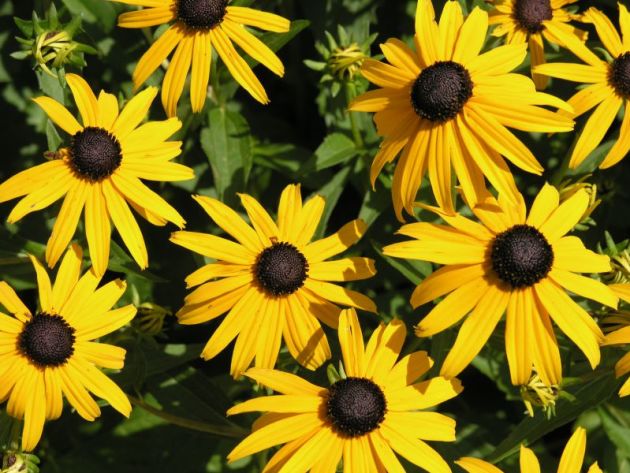

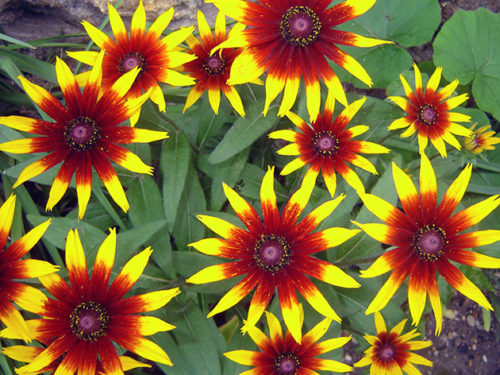
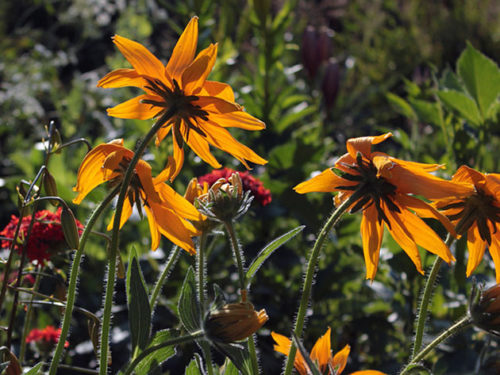
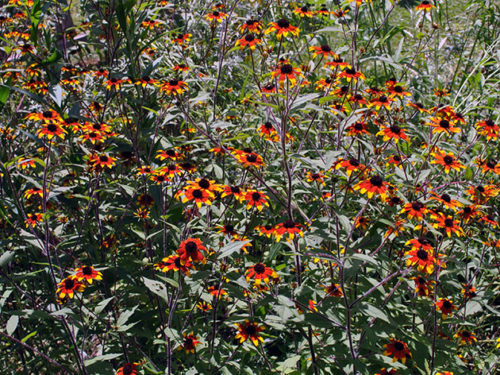

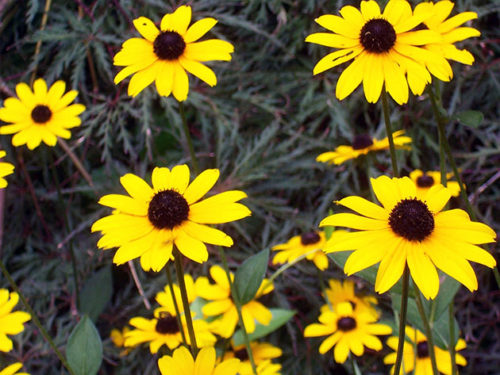
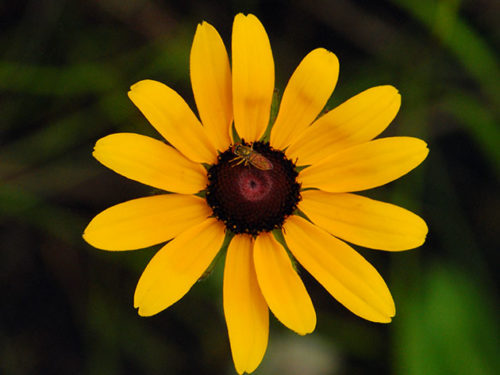
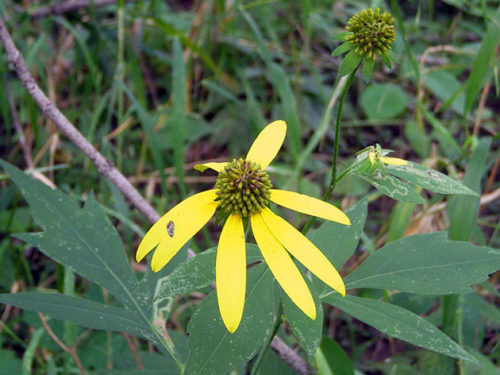
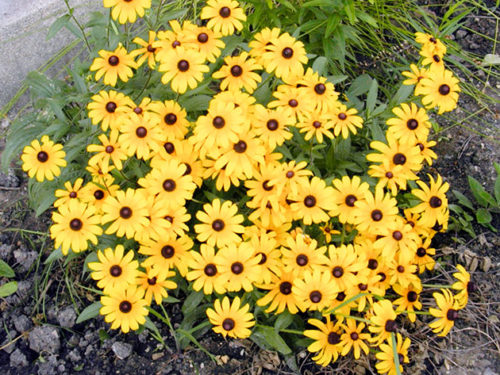
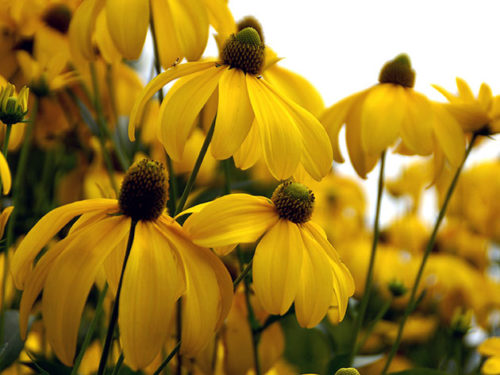
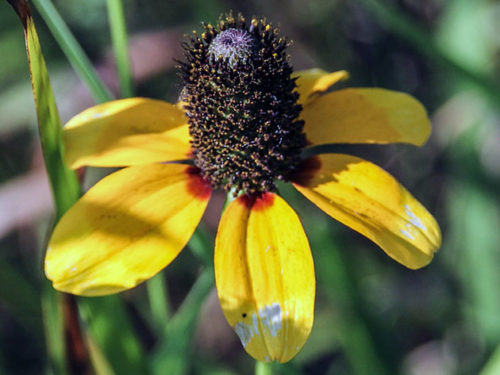
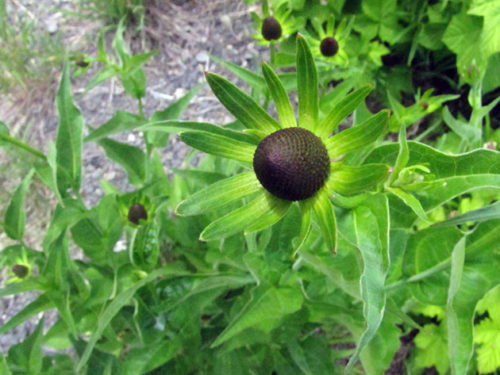
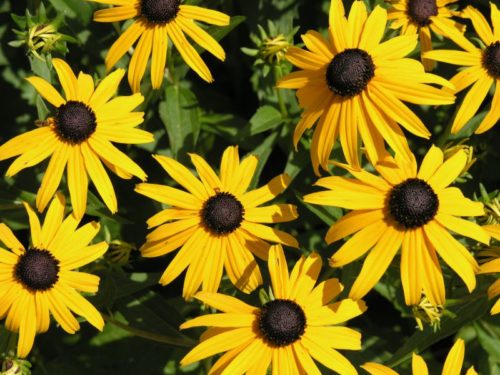
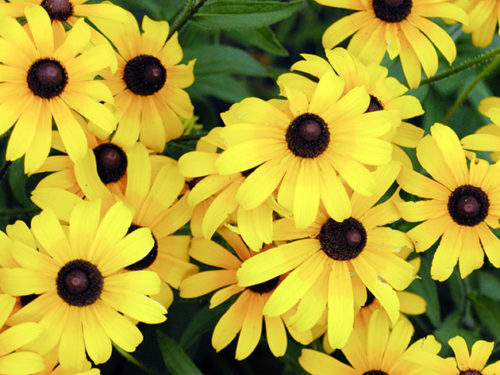
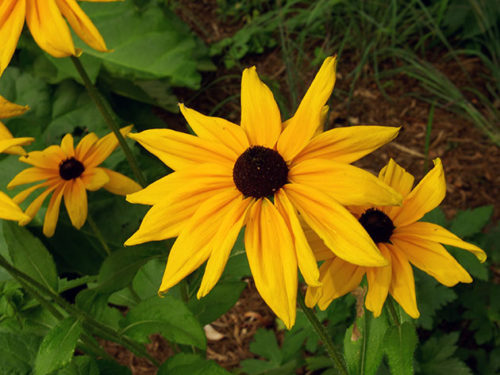
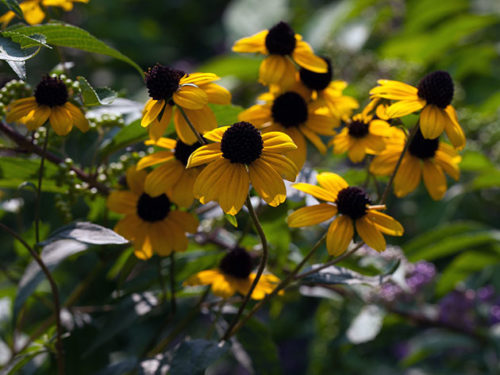
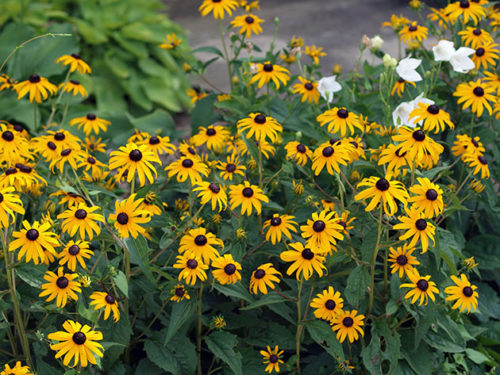
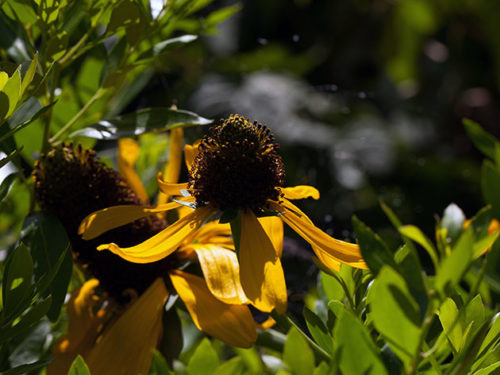
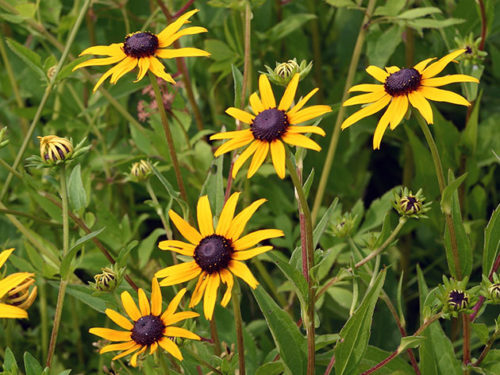












 Start a discussion ...
Start a discussion ...